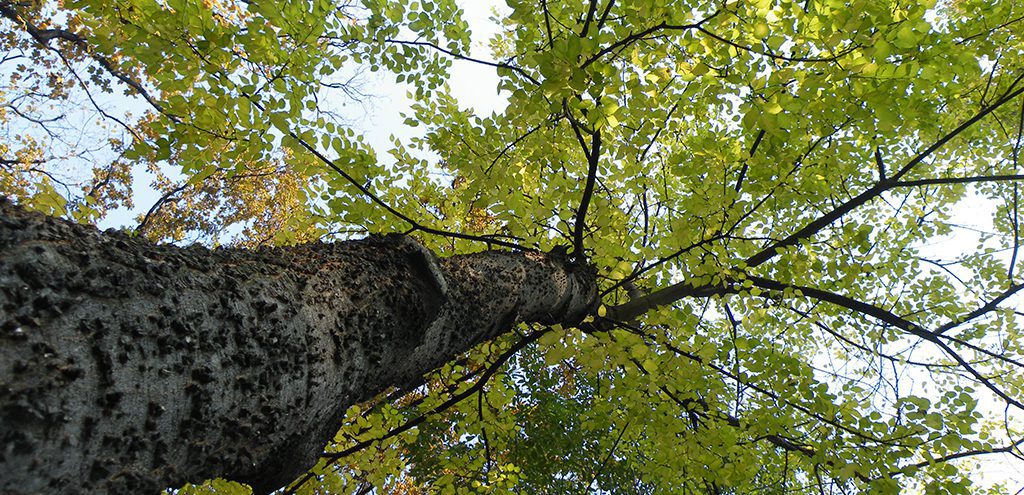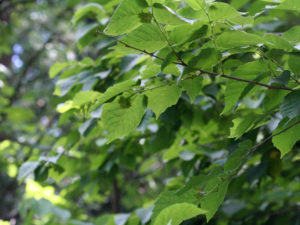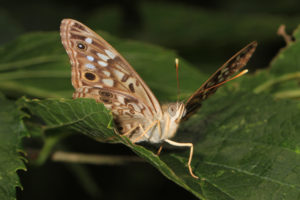
Each fall, members of the Society of Municipal Arborists (SMA) nominate and vote for the SMA Urban Tree of the Year. This tradition dates to 1996 when the urban workhorse ‘Princeton Sentry’ Ginkgo was crowned. And for 2020 the Urban Tree of the Year is none other than the Celtis occidentalis or the common Hackberry!
New York Tree Trust Development Director and NYSUFC Board Member James Kaechele summed up the magic of the Hackberry, “This fine native tree is an underestimated contributor to many an urban forest. With a wide native range from New England through the Mid-Atlantic and west to Wyoming, hackberry grows in rocky, alkaline sites where other trees may struggle. It weathers cold and windy winters through USDA Hardiness Zone 2 and sweats the hot summers of Zone 9; it seems equally happy curbside in Toronto as it does in a Washington, D.C. neighborhood park.”
And we have to agree heartily with that last statement!
In short, a relatively unknown and underappreciated shade tree, the hackberry has distinct, light-gray raised corky bark and delicate, light green leaves resembling those of the American elm but are smaller in size. The hackberry is tough – tolerant of a variety of soil types and moisture conditions – and valued by wildlife for its small berry-like fruits called “drupes” that contain its seed. Hackberries are available for free through our residential planting program, RiverSmart Homes or you can plant one yourself and get up to $50 back through our tree rebate program.
And now to make a long story longer –

The hackberry has for centuries lived a life of unassuming existence – a wonderful shade provider from the Elm family with its shares of upsides and downsides – that no doubt lives up to its oft-cited nickname: “the unknown tree.” When given the opportunity of rich, moist, open soil it has the potential to reach nearly 100’ high and last for well over a century – but most often it’s considered a medium-sized tree found in parks and wetlands, parking lots and open yards. With a range stretching from parts of Canada all the way to the southeastern United States, it dots cities, towns and rural areas everywhere (but is often considered “what you find when looking for something else.”) But don’t underestimate – the hackberry’s place in the urban landscape is solidified by its ability to adjust valiantly to any soil conditions, but more importantly its resistance to the Dutch elm disease (DED) that fells so many of its relatives.
The relatively unremarkable form of the hackberry does not mean it’s not effective – as it grows into maturity, its taps into its genes and spreads its looping canopy wide like an elm (but with more of an O-shape and less of the characteristic V-form elms are known for). It’s branching and leaves, however, carry a few unusual phenomenons that certainly add to the species’ character:
- Twigs often grow bunched together, slightly deformed, due to mite that gives it the “witches-brooms” nickname.
- Bark is often smooth and gray when young, but begins developing the wart-like growths and vertical corky ridges that make it distinguishable amongst others as it matures.
- The underside of leaves often play host to small, hard and well-sealed “nipple galls,” home to minute jumping lice.

If you thought you were the only one to show a little interest in this underappreciated species, though, you’d be wrong – a slew of butterflies are particularly attracted to the hackberry as a larval host for their offspring and can be seen securely attached to the trunk and branches. The aptly named “hackberry emperor” butterfly is one that’s actually colored like the tree’s bark; other species include the tawny emperor, mourning cloak, and American snout. Many, many birds (including robins, quail and cedar waxwings) love the tree for its fruit – the fleshy, edible “berry” gives the mild taste of a raisin or date – but often have to contend with the large stone pit inside (digested by them along migratory routes, it’s how the hackberry’s range is so expansive). The fruit ripens in the fall and is often the last source of sustenance for hungry birds in the winter.
The hackberry hangs its hat on its ability to withstand the grit and grime of an urban existence, its soil adaptability and DED resistance, and its strength against wind damage. This strength may be just the reason why it was and is still used for products such as furniture, athletic goods, boxes and crates and plywood. The species draws its name from a stumbling Scottish mistake, a species similarly called “hagberry” that was derived from the cherry family (the trees’ berries were likely the culprit for the mislabeling). But with all of the back-and-forth that this species inspires, it is a stoic member of a storied family of trees that can be found right here in the District. Aside from being sprinkled about in parks and near private homes and businesses, you can also find it at Cedar Hill (the Frederick Douglass National Historic site), Rock Creek Park, at the nearby C&O Canal – and a special specimen can be seen on the National Mall as part of the Korean War Veterans Memorial.

